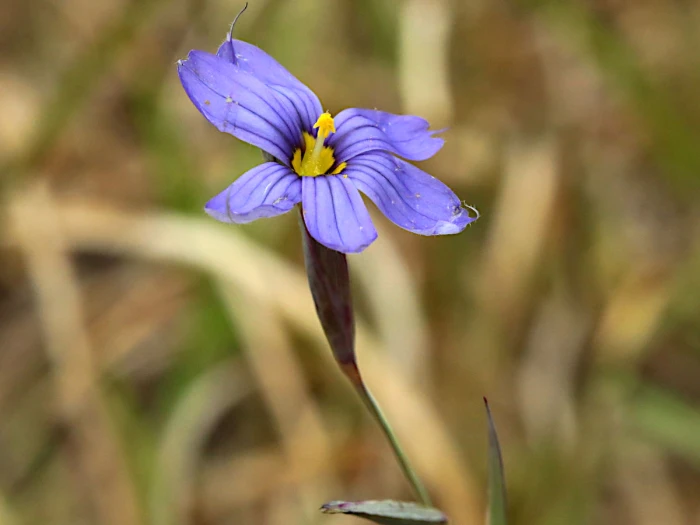Eastern Blue-Eyed Grass
(Sisyrinchium atlanticum)
Eastern Blue-Eyed Grass (Sisyrinchium atlanticum)
/
/

Peterwchen
CC BY-SA 4.0
Image By:
Peterwchen
Recorded By:
Copyright:
CC BY-SA 4.0
Copyright Notice:
Photo by: Peterwchen | License Type: CC BY-SA 4.0 | License URL: https://creativecommons.org/licenses/by-sa/4.0 | Uploader: Peterwchen | Publisher: Wikimedia Commons | Title: Sisyrinchium_atlanticum-flower.jpg | Notes: User created page with UploadWizard |






















Estimated Native Range
Climate Requirements for Palm Beach Gardens, Florida
| This Plant | Your Site | Plant Suitability for Your Location | ||
|---|---|---|---|---|
| • Precipitation | 18" - 158" | 58" | Aquatic | Aquatic |
| • High Temp. | 61°F - 96°F | 90°F | Your summer temperatures are normal for this plant. | Excellent |
| • Low Temp. | -14°F - 60°F | 56°F | Your winter temperatures are normal for this plant | Excellent |
This plant should grow very well at your location without additional irrigation.
Summary
Sisyrinchium atlanticum, commonly known as Eastern Blue-Eyed Grass, is a semi-deciduous perennial herb native to moist meadows, grasslands, and open woodlands in the Eastern United States and Canada. It typically grows to a height of 1-2 feet (0.3-0.6 meters) and a width of up to 0.2 feet (0.06 meters). This plant features grass-like foliage and star-shaped, periwinkle blue flowers with yellow centers that bloom in the spring and early summer, adding a delicate charm to garden settings.
Eastern Blue-Eyed Grass is appreciated for its low maintenance requirements and the subtle beauty of its flowers. It is often used in rock gardens, border fronts, and as a ground cover in naturalized areas. It thrives in full sun to part shade and prefers moist, well-drained soils. While it tolerates low water conditions, it benefits from consistent moisture. It is not known for serious disease or pest issues, but can suffer from root rot if kept too wet. This plant is not typically invasive and is a good choice for gardeners looking to support native flora and fauna.CC BY-SA 4.0
Eastern Blue-Eyed Grass is appreciated for its low maintenance requirements and the subtle beauty of its flowers. It is often used in rock gardens, border fronts, and as a ground cover in naturalized areas. It thrives in full sun to part shade and prefers moist, well-drained soils. While it tolerates low water conditions, it benefits from consistent moisture. It is not known for serious disease or pest issues, but can suffer from root rot if kept too wet. This plant is not typically invasive and is a good choice for gardeners looking to support native flora and fauna.CC BY-SA 4.0
Plant Description
- Plant Type: Herb
- Height: 1-1.5 feet
- Width: 0.133-0.2 feet
- Growth Rate: Moderate
- Flower Color: Blue
- Flowering Season: Spring, Summer
- Leaf Retention: Semi-Deciduous
Growth Requirements
- Sun: Full Sun
- Water: Medium
- Drainage: Fast
Common Uses
Bee Garden, Bird Garden, Butterfly Garden, Deer Resistant, Drought Tolerant, Groundcover, Low Maintenance, Rabbit Resistant, Water Garden
Natural Habitat
Moist meadows, grasslands, and open woodlands
Other Names
Common Names: Atlantic Blue-Eyed-Grass, Eastern Blue-Eyed-Grass, Bermudienne De L’Atlantique, 庭菖蒲, Eastern Blueeyed Grass
Scientific Names: Sisyrinchium atlanticum, Sisyrinchium mucronatum var. atlanticum, Sisyrinchium corymbosum, Sisyrinchium apiculatum, Sisyrinchium scoparium, Sisyrinchium tracyi, Sisyrinchium flexile, Sisyrinchium violaceum, Sisyrinchium longifolium
GBIF Accepted Name: Sisyrinchium atlanticum E.P.Bicknell